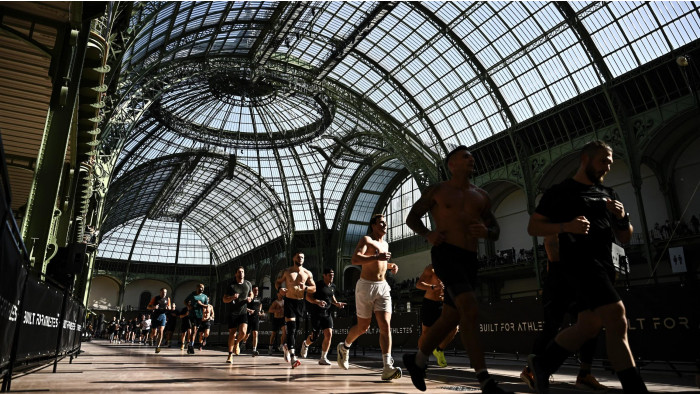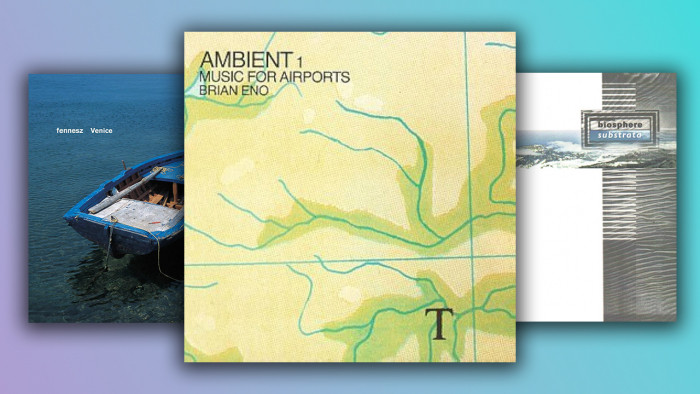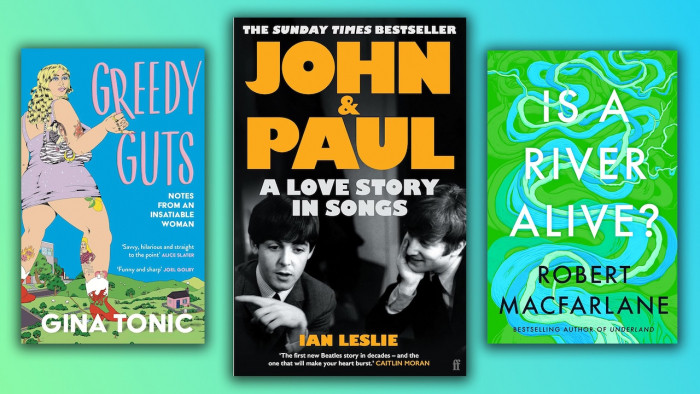When making music, usually the most dangerous thing than anyone might encounter is an over-enthusiastic singer swinging a mic about, or an accidental flying drumstick.
Occasionally, artists put their head above the parapet to make a controversial and unpopular point, putting themselves in danger once the record’s content reaches the general public. Alternatively, the recording process itself might be fraught with genuine issues and tragic events, with the music-makers truly suffering for their art.
We take a look at the 10 most dangerous records ever released. Approach with caution.
NWA - ‘Fuck Tha Police’ (1988)
N.W.A. were, of course, the self-styled 'World's Most Dangerous Group' and rightly-so; their 1988 debut Straight Outta Compton was an unrelenting, furious blast of a record, documenting the gangster lifestyle, and life on the streets, as they lived it in Los Angeles. However, the track which really got the attention was the straight-to-the-point Fuck Tha Police, which addressed head-on their belief in the racism inherent in the force at the time and the black community's widespread distrust of the law enforcers. If that wasn't enough, there were several lines which appeared to condone retaliatory violence towards the police. Needless to say, this did not go down well with the authorities, with the FBI and the US Secret Service stepping in to warn their record label, Ruthless Records, with NWA banned from performing several shows. While this obviously helped stoke their reputation, it was undoubtedly a dangerous record to make; the Rodney King riots occurred just four years later and the band could easily have been literally under fire by a powerful enemy at any point before then. It still sounds phenomenal today.
Tupac Shakur - ‘Hit ‘Em Up’ (1996)
Arguably the big turning point in the West Coast vs East Coast rap wars of the early 90s, this has been hailed as the greatest diss track of all time, as Tupac took aim at all his detractors in one foul-mouthed five and a half minute blast. Remarkably, it was just a B-side to the single How Do U Want It, but such was Tupac's influence and profile at the time, that he knew everyone would be listening. Convinced that Biggie Smalls and Puff Daddy's Bad Boy Records had had a part in his November 1994 ambush and attack, he took the opportunity to issue vicious insults against those two figures (including bragging about sleeping with Biggie's on-off girlfriend Faith Evans - whose vocals appear on the track), plus other East Coast rappers. It was, however, a truly dangerous record to make: it inflamed tensions between the two sides to breaking point, ultimately resulting in the still-unsolved killings of both himself and Biggie in 1996 and 1997 respectively.
Mayhem - De Mysteriis Dom Sathanas (1994)
Surely the most dangerous record ever made; if you were anywhere near the Norwegian black metal band Mayhem during the making of their debut opus De Mysteriis Dom Sathanas there was a good chance you wouldn't make it out alive. Recording originally started in 1987, but it took until 1994 for the album to actually be released, due to a series of dark episodes. Mayhem's drummer Hellhammer had already stated that the lyrics to Freezing Moon were "meant to make people commit suicide" and vocalist Dead did just that in 1991, leaving a note which opened with the words "excuse all the blood". As if that wasn't enough, new bassist Varg "Count Grishnackh" Vikernes proceeded to be involved with three church arsons before an argument led to him murdering the band's guitarist Euronymous in 1993. The album had been pretty much completed before this incident, and it was released as Vikernes was sentenced, complete with lyrics from Dead and Vikernes' bass parts. Despite requests for them to take off the latter's contribution to the record, Hellhammer stated that "I thought it was appropriate that the murderer and victim were on the same record."
Serge Gainsbourg - ‘Aux Armes Et Caetera’ (1979)
Who could have ever predicted that a lilting reggae number would lead to death threats? Yet that's exactly what happened when Serge Gainsbourg went to Kingston, Jamaica to record a new album with noted reggae musicians including Bob Marley's backing singers (among them his daughter Rita Marley). The title track was a cover of La Marseillaise, the French national anthem, and sparked a host of protests: one journalist claimed he was feeding anti-semitism by making money from the national anthem, while others criticised him for editing the lyrics, others simply issuing death threats for their belief that he was insulting the French Republic. It could have been an extremely dangerous move for the legendary artist but, naturally, he carried on following his artistic vision and, eventually, the album was a big success.
Sex Pistols - ‘God Save The Queen’ (1977)
In a similar vein, the Sex Pistols had taken on the British establishment two years earlier, with their incendiary version of God Save The Queen, released to coincide with the monarch's Silver Jubilee. At the time, the song provoked fury from a nation which held the Royals in high regard and were shocked with frontman Johnny Rotten's dismissal of the Queen with "she ain't no human being" and comparing her reign to a "fascist regime". It was an outspoken, and somewhat dangerous stance, but one seemingly felt by many at the time, as the track raced to number 2 on the official charts despite being banned by the BBC (it's still widely believed that it sold enough to take the top spot but that it was kept off to avoid offence). Rotten explained that the song was not meant to be negative: "You don't write God Save The Queen because you hate the English race. You write a song like that because you love them, and you're fed up with them being mistreated."
Dmitri Shostakovich - Symphony No. 5 (1937)
People talk about 'pressure' in music all the time: the 'pressure' of following up a successful release, or having an arduous touring schedule. Yet if you want to talk about real pressure, then look no further than Dmitri Shostakovich. In 1937, the famous Russian composer was living under the shadow of Stalin's maniacal rule of his homeland, with the country in the middle of the Great Purge, with millions killed or exiled to Siberia. Shostakovich had come perilously close already to falling foul of the authorities, with his 1936 opera Lady Macbeth of the Mtsensk District and ballet The Limpid Stream attracting criticism for not following the heroic classicism required for Socialist Realism, with his Fourth Symphony withdrawn during rehearsal for fear of it not being tolerated. Thus, his Fifth Symphony had to get the thumbs up from the authorities, or he would surely lose his life. Somehow, Shostakovich managed to produce an astounding work that both satisfied those people with the surface impression of a triumphalist work, yet had subtle layers and elements underneath which criticised the regime and offered comfort for those mourning. He achieved the seemingly impossible feat of appealing to both the authorities and the public equally with a work of true art: he even, apparently, wrote, with a straight face, that the work was "a Soviet artist’s creative response to justified criticism". Heroic.
Metallica - ‘St Anger’ (2003)
Prison gigs are nothing new - as a certain Mr Johnny Cash would attest - but Metallica's decision to film a video at one was a step above in terms of danger. It was to be the comeback single for their hotly-anticipated new record, St Anger, which came after the departure of Jason Newstead and fraught recording sessions, which were documented in Some Kind Of Monster. It needed to be attention-grabbing, and so they rocked up (literally) to San Quentin prison to film a promo. As documented in the final version, the band had to agree to non-hostage terms, in the event of them being taken by a prisoner. Director Brendan Malloy stated that, "for the entire band there was only one bodyguard... a lot of the time we were heavily outnumbered... there were situations we were in the cellblock with four hundred guys and something very easily could have happened. Make no mistake about it: everyone was scared at all times because these were guys that were life inmates who have nothing to lose". Fortunately, the shoot progressed without a hitch - we daresay it might have been a different outcome had it been Justin Bieber trying to shoot a video.
Royal Scots Dragoon Guards - Spirit Of The Glen: Journey (2008)
Another record that was literally dangerous to make comes from an unlikely source: the Royal Scots Dragoon guards. Recording the follow-up to a big Christmas seller the previous year, they were halfway through when they were deployed to a six-month tour of Iraq. Unperturbed, they shipped their recording equipment to Basra and finished the record in 40 degree heat and under constant risk of grenade attacks. So next time you hear a band complain about 'hellish' recording sessions, it might be wise to point out that it really could be worse.
Tom Robinson Band - ‘Glad To Be Gay’ (1978)
Just 11 years before this song was released, homosexuality had been illegal in the UK. In punk singer Tom Robinson's words, "there wasn't a single public figure who was openly gay, so we had no role models, no mentions of homosexuality." With gay people still persecuted, Robinson, inspired by the Sex Pistols and New York theatrical troupe Hot Peaches, wrote a protest song for a 1976 Gay Pride march, with verses criticising the British public's attitude toward gay people, the Police's unfair targeting of gay pubs and the double standards of the British press. This was brave stuff at the time, with Robinson opening himself up to vitriol, abuse and worse. The BBC refused to broadcast the song when it entered the top 40, but John Peel defied his bosses and played it anyway - it ended up becoming a singalong hit, reaching number 18 in the charts. The song went on to become a defining track in the gay rights movement and is still hugely popular today.
Body Count - ‘Cop Killer’ (1992)
If N.W.A.'s earlier effort had hinted at retribution against the Police, then Body Count's 1992 track made it patently obvious. It was written in 1990 and released in 1992 shortly prior to the LA riots over the police attack on Rodney King, with the song mentioning the then-chief of police Daryl Gates as well as King himself. The police accused the song of 'inflaming racial tensions', prior to the announcement of the acquittal of the four police officers involved, while President George Bush, Vice-President Dan Quayle and Tipper Gore all waded in, putting pressure on their label Time Warner to withdraw the track. Frontman Ice-T defended the song, saying, "I'm singing in the first person as a character who is fed up with police brutality. I ain't never killed no cop. I felt like it a lot of times. But I never did it. If you believe that I'm a cop killer, you believe David Bowie is an astronaut." As with N.W.A., while the notoriety helped gain its parent record attention, it was, nonetheless a dangerous move to make - in fact, the band gave the song away free once they decided that the controversy was overshadowing the music - and to prove the point that they weren't trying to make money from it, just make a point. Job done on that last front.
Latest
Related Reviews and Shortlists


The best whisky taste tested









